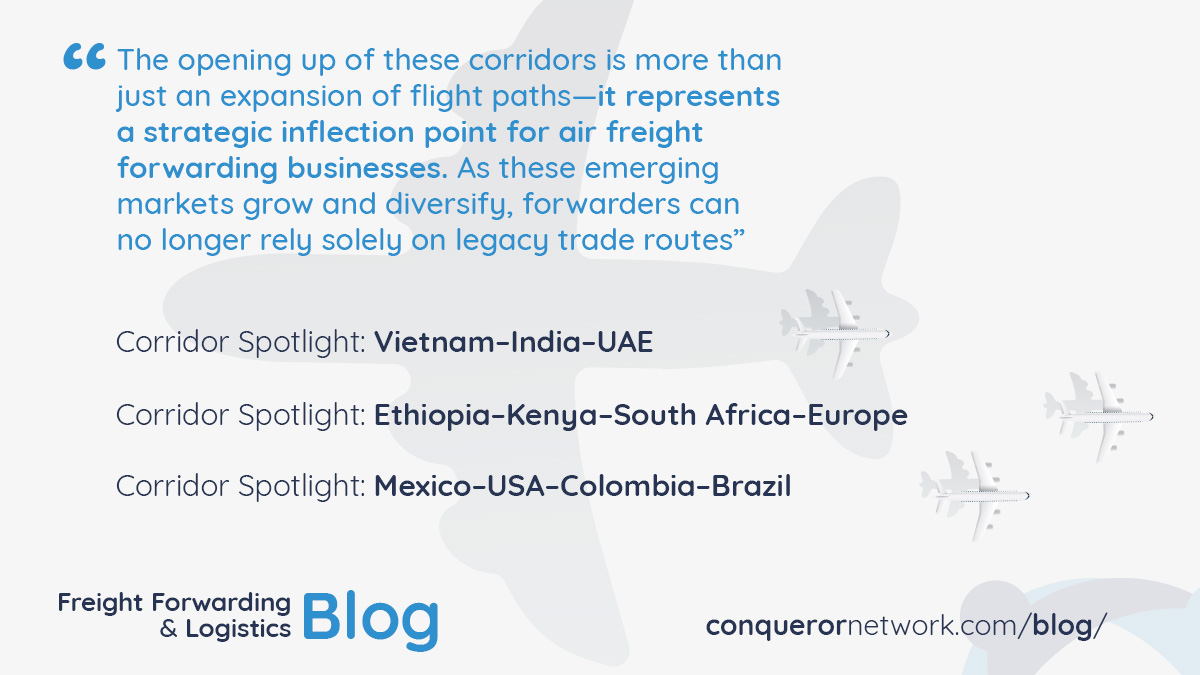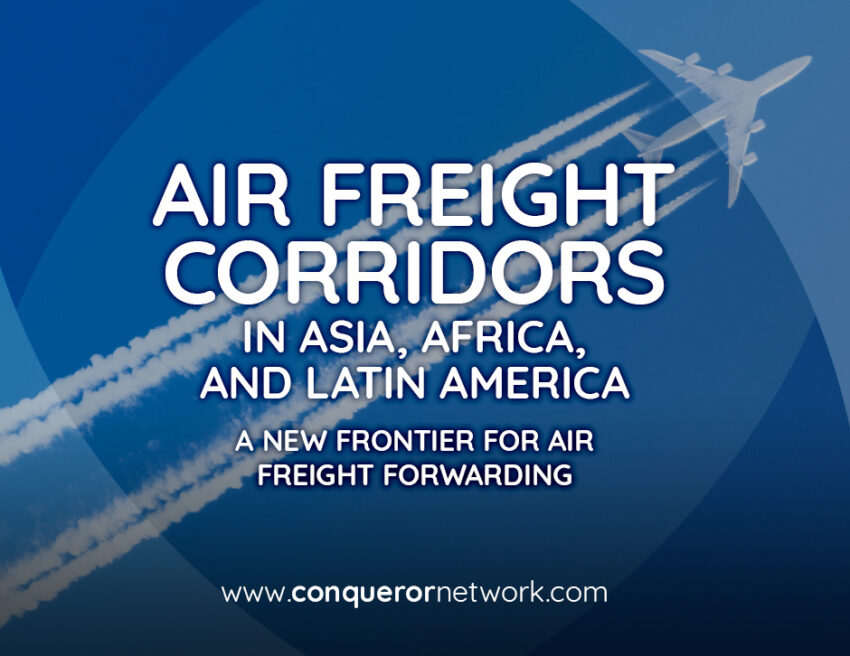Not long ago, freight forwarders could count on a handful of global routes to keep business flowing—but in 2025, the air freight map is being redrawn in real time. If you’re in air freight forwarding, you’re likely already feeling the ground shift. New trade routes are opening. Demand patterns are evolving. And some of the world’s fastest-growing economies are no longer centered around traditional Western hubs. Instead, emerging air freight corridors in Asia, Africa, and Latin America are rewriting the air cargo map.
What does this mean for you as a freight forwarder? Opportunities—big ones. But only if you’re prepared to pivot, adapt, and harness the potential of these dynamic markets. In this blog, we’ll explore the emerging air freight corridors in these three vibrant regions and explain how forwarders can position themselves to benefit from this next chapter of global trade.
Asia: A rebalancing of regional trade
Asia has long been a giant in global trade, but the dynamics within the region are evolving rapidly. While China remains a dominant force, Southeast Asian nations—especially Vietnam, Thailand, Malaysia, and the Philippines—are rising as new manufacturing and export powerhouses. These countries are attracting significant foreign investment as companies diversify their supply chains in response to rising labor costs in China and ongoing geopolitical uncertainties.
Corridor spotlight: Vietnam–India–UAE
The Vietnam–India–UAE route is gaining momentum. Vietnam is exporting high-tech electronics and textiles, India is contributing pharmaceuticals and automotive parts, and the UAE serves as a re-export hub connecting Asia with Europe and Africa. This triangular corridor is becoming a high-frequency, high-value pathway for air freight forwarding professionals to tap into. Air freight forwarding companies in Asia are already scaling operations near aerotropolis zones like Long Thanh International Airport (Vietnam), Hyderabad Airport (India), and Al Maktoum International Airport (Dubai), signaling the corridor’s growing significance.

Africa: rising demand meets infrastructure ambition
Africa’s growth story is one of potential turning into progress. The continent is seeing increased industrial activity, rising e-commerce penetration, and new infrastructure investments led by both local governments and international players like China’s Belt and Road Initiative.
Corridor Spotlight: Ethiopia–Kenya–South Africa–Europe
Addis Ababa, home to Ethiopian Airlines Cargo, is emerging as a major African air freight hub. With direct flights to dozens of destinations across Africa, Asia, and Europe, the Ethiopian capital is well positioned to serve as a central node in intra-African and Africa–Europe air corridors.
Kenya’s Jomo Kenyatta International Airport (Nairobi) is another hotspot, especially for fresh produce and floriculture exports. Pair that with Johannesburg’s OR Tambo Airport, and you get a robust corridor running from East Africa through Southern Africa and out to Europe—one ripe with opportunity for air freight forwarding firms. The African Continental Free Trade Area (AfCFTA) is further catalyzing intra-African trade, enabling air freight forwarders to support businesses moving goods across borders more efficiently.
Quick fact:
Between 2020 and 2025, air cargo demand in Sub-Saharan Africa is expected to grow by over 5% annually, outpacing some global averages.
Air freight corridors in Latin America: Nearshoring and e-commerce fuel the boom
In Latin America, a growing wave of nearshoring from U.S. companies is breathing new life into air freight corridors. Countries like Mexico, Colombia, Peru, and Brazil are seeing increased demand for short-haul air cargo as American importers look to shorten supply chains and reduce dependence on Asia.
Corridor Spotlight: Mexico–USA–Colombia–Brazil
Mexico’s proximity to the U.S. makes it a critical hub for automotive, electronics, and apparel exports. Bogotá’s El Dorado International Airport is now one of the busiest cargo hubs in Latin America, largely due to its central location and rising exports of flowers, fruits, and pharma products. Add São Paulo’s Viracopos and Guarulhos airports into the mix, and you’ve got a vibrant corridor connecting North, Central, and South America.
E-commerce is also booming. With growing middle classes and better internet penetration, Latin American consumers are driving demand for express air cargo. Freight forwarders that can handle customs complexities and last-mile challenges are seeing strong growth in this space.
Pro tip:
Look out for emerging cargo flights from Miami to secondary Latin cities like Medellín, Lima, and Curitiba—an indicator of growing demand off the beaten path.
What the new air freight corridors mean for air freight forwarding companies
The opening up of these corridors is more than just an expansion of flight paths—it represents a strategic inflection point for air freight forwarding businesses. As these emerging markets grow and diversify, forwarders can no longer rely solely on legacy trade routes.
So how can freight forwarders respond?
-
Invest in regional expertise: Building partnerships with agents and suppliers on the ground in these regions is crucial. Understanding local customs regulations, documentation norms, and infrastructure constraints will differentiate leaders from laggards.
-
Leverage tech for visibility: Real-time tracking, automated documentation, and AI-driven route optimization are must-haves in emerging corridors, where infrastructure or connectivity might lag behind.
-
Offer value-added services: From cold chain for perishables in Africa to express clearance for Latin American e-commerce, freight forwarders must tailor their services to the specific needs of each corridor.
Final Thoughts: A New Era of Global Connectivity
The growth of new air freight corridors in Asia, Africa, and Latin America reflects a world that is becoming more interconnected—and more decentralized. The traditional air freight hubs are still important, but they no longer dominate the conversation. Today, growth is happening everywhere.
For freight forwarders, this is an exciting time. It’s a chance to enter new markets, build strategic partnerships, and evolve your service offerings. But success won’t come from watching from the sidelines. It will require bold moves, regional insight, and a deep understanding of how these corridors operate.


